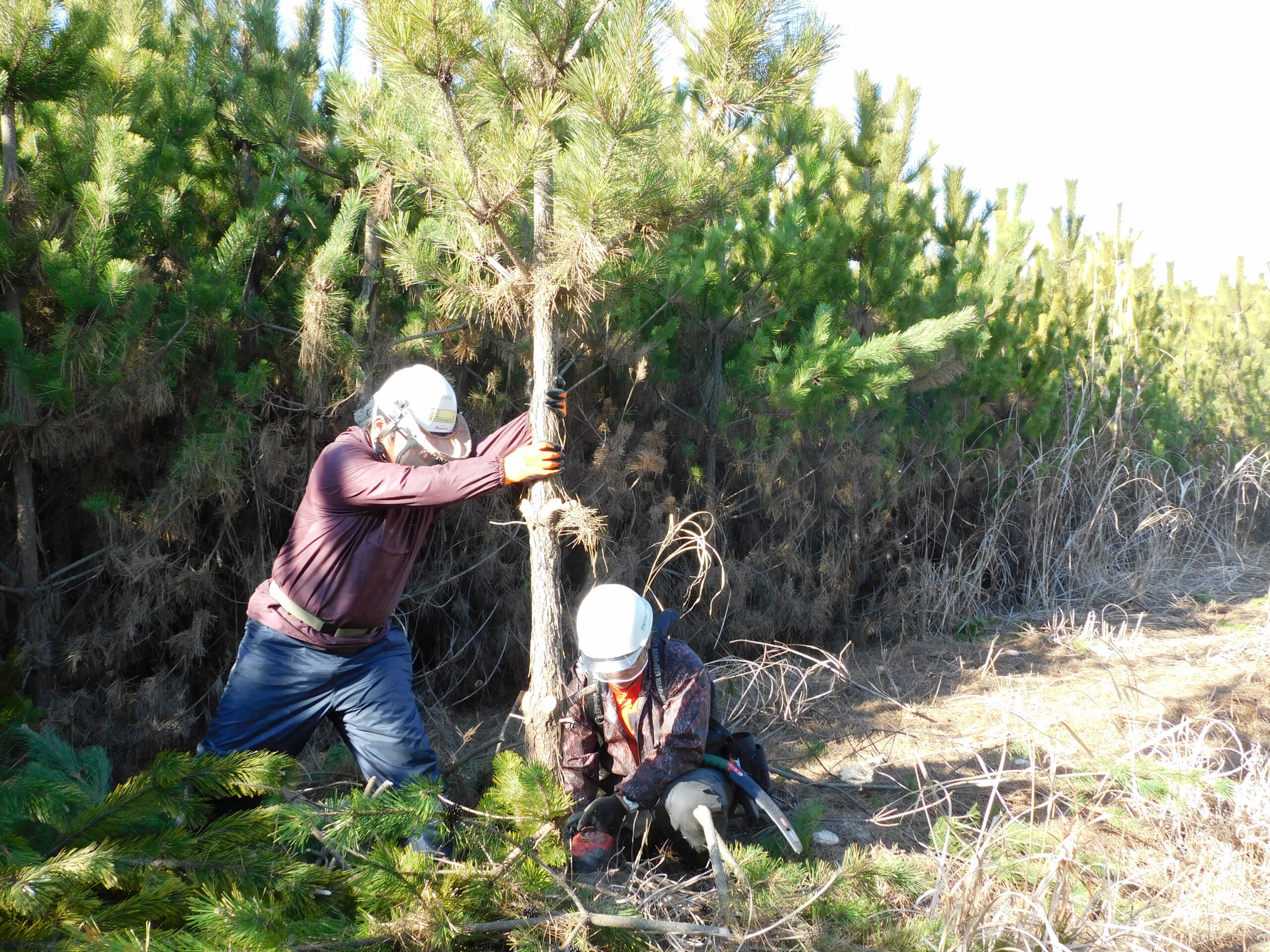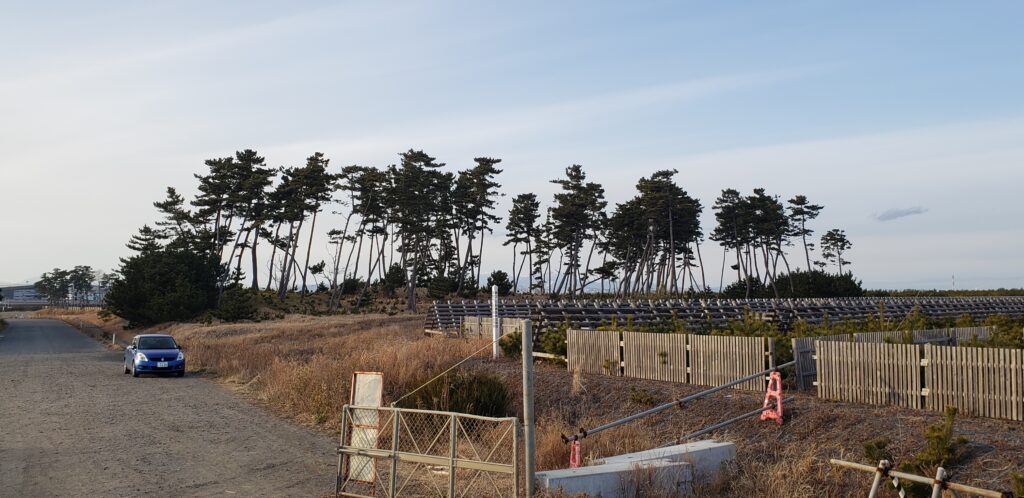
7 February 2022
It has been 11 years since OISCA together with the disaster survivors and other stakeholders committed to rehabilitate the more than 100 hectares tsunami-damaged coastal forest in Natori, Miyagi Prefecture. Our project is now on its second phase, mostly focusing on site maintenance. Activities include improvement of site water drainage, weeding (kuzu, nise acacia, and fuji tsuru), and thinning. The thinning is crucial for having broad, tall, and sturdy tree trunks, promotes the horizontal and deep rooting of black-pines, and to prevent the withering of the lower branches of black-pines. These factors guarantee the creation of a strong and resilient forest that will protect local communities from disasters.
According to the experts, pre-tsunami coastal forests were congested with almost 10,000 standing black-pines per hectare. Without any thinning, the trees were weak with no sturdy and broad trunks, and since they were planted closely, the trees were not able to expand their roots both horizontally and vertically. Moreover, as a result of no thinning, the lower branches of pre-tsunami black-pines had withered.
Now, to prevent the same problem from happening again, we are working in close collaboration with the government and academe experts to create a system for the thinning process. We are the pioneer organization to do thinning the post-tsunami coastal forests of Japan. We officially started it early January through March this year. We will be removing 1,650 trees or 33% of the 5,000 standing trees per hectare. As we are targeting to do it in an area of 10 hectares, a total of 16,500 black-pines will be cut. We will do the same process for 7 straight years. We will be needing the amount of 170,000 USD per year (just for thinning and the sustainable disposal of the thinned trees). The central and prefectural government of Japan committed to shoulder the 50% cost for this year and next year.
Meanwhile, due to corona, there was a decline in the number of volunteers from outside Miyagi Prefecture.
We received several requests expressing their intention to help, but we have no choice but to decline to comply with the government`s safety protocols. In spite of this, the increase in the number of local volunteers compensated the absence of outside volunteers. Equipped with strong volunteer spirit and deep understanding of how meaningful their contributions are, local volunteers are willing to volunteer for an average of 8 hours to help us maintain our project site. While other organizations are struggling from engaging volunteers (both local and outside volunteers), our group of volunteers keeps on getting bigger and it is heartwarming because they keep on returning. We were able to mobilize 237 volunteers this year, which is almost 7 times lower than the average of 1,800 volunteers that we had before corona. Under much safer condition, we are looking forward to working with the volunteers from the different parts of Japan or from abroad.





